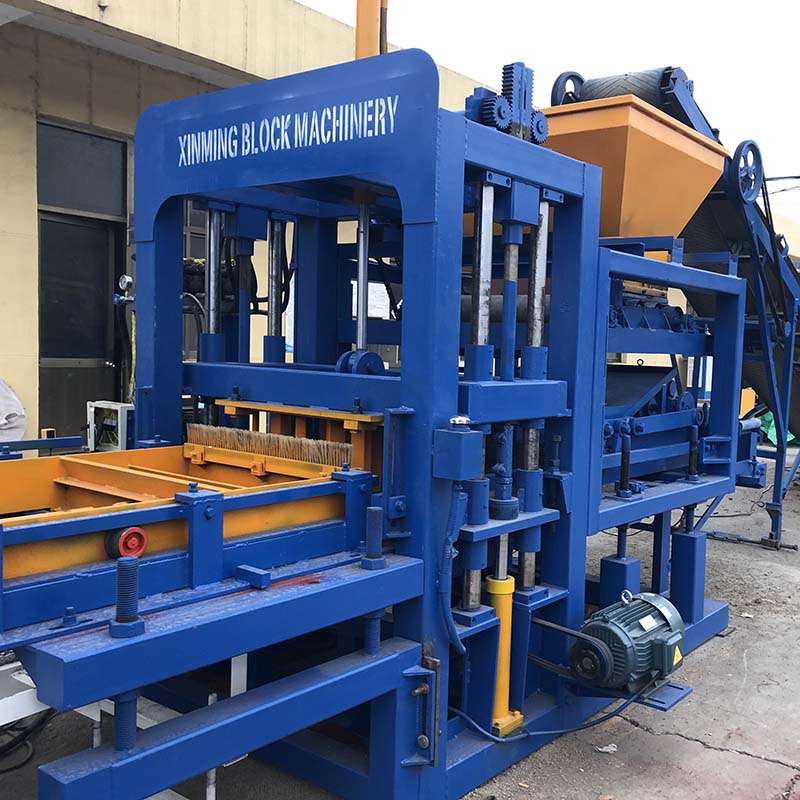
Image source:Aiwei block machine
Introduction
Brick making machines, once synonymous with manual labor and traditional techniques, have undergone a remarkable transformation propelled by technological innovation. Today, these machines stand at the forefront of modern construction, driving efficiency, precision, and sustainability. This article explores the pioneering innovations and technological advances that are shaping the future of brick making machines, ushering in an era of automation, artificial intelligence (AI), smart systems, and sustainable practices.
1. The Evolution of Brick Making Technology
Brick making has come a long way from its humble origins. Early brick makers relied on manual labor and simple tools. With the advent of mechanization, brick making machines took center stage, gradually evolving to meet the demands of an advancing construction industry.
2. Automation and Precision
Automation is revolutionizing brick production by streamlining processes and enhancing accuracy.
- Automated Mixing and Feeding: Automated systems ensure consistent mixing and precise feeding of raw materials.
- Hydraulic and Pneumatic Pressing: Automation optimizes pressing techniques, resulting in uniform brick shapes and densities.
3. AI Integration: Enhancing Efficiency and Quality
Artificial intelligence is being integrated into brick making machines, revolutionizing their capabilities.
- Quality Control: AI-powered systems detect defects, ensuring only high-quality bricks are produced.
- Predictive Maintenance: AI predicts machine maintenance needs, minimizing downtime and optimizing performance.
4. Smart Systems and IoT Connectivity
The Internet of Things (IoT) is transforming brick making machines into interconnected systems.
- Remote Monitoring: IoT enables real-time monitoring of machine performance and production remotely.
- Data Analytics: Data collected from machines provide insights for process optimization and predictive analysis.
5. Sustainable Practices: Eco-Friendly Brick Production
The drive for sustainability is reshaping brick production, integrating eco-friendly practices.
- Recycled Materials: Some machines use recycled materials like fly ash or industrial waste, reducing environmental impact.
- Energy Efficiency: Sustainable machines optimize energy usage, reducing carbon emissions.
6. 3D Printing: A Paradigm Shift in Brick Making
The integration of 3D printing technology with brick making machines is redefining brick production.
- Design Freedom: 3D printing allows the creation of intricate and complex brick designs that were previously unattainable.
- Customization: Tailor-made bricks for unique architectural projects are now possible.
7. Human-Machine Collaboration: The Future Workforce
Technological advances do not replace human involvement but rather redefine roles.
- Skilled Operators: Operators are now skilled technicians who manage and optimize the advanced machines.
- Creativity and Innovation: Human operators drive the creative aspects of brick design and customization.
8. Challenges and Ethical Considerations
As with any technological revolution, there are challenges and ethical considerations.
- Job Displacement: Automation may impact manual labor jobs, requiring reskilling and job creation in other sectors.
- Sustainability vs. Resource Consumption: Striking a balance between sustainability and resource consumption is crucial.
9. Collaborative Innovation: Industry Partnerships
Innovations in brick making machines are often a result of collaborative efforts.
- Industry and Academia Collaboration: Research and development partnerships drive technological advancements.
- Knowledge Sharing: Open-source initiatives contribute to shared progress and learning.
10. Future Prospects: Beyond Bricks
The future of brick making machines extends beyond brick production.
- Material Diversification: Machines may produce other construction materials like tiles, panels, and blocks.
- Multi-Functional Machines: Machines could integrate multiple functions, offering versatility and efficiency.
Conclusion
The evolution of brick making machines from manual labor to advanced technology is emblematic of the broader trajectory of modern construction. Innovations in automation, AI, sustainable practices, and 3D printing are shaping the future of these machines. While challenges and ethical considerations arise, the potential for job creation, enhanced creativity, and environmental benefits cannot be overlooked. As brick making machines pave the way for a technologically empowered construction industry, they signify a dynamic synergy between human ingenuity and cutting-edge technology, forging a future where structures are built with precision, sustainability, and innovation.
